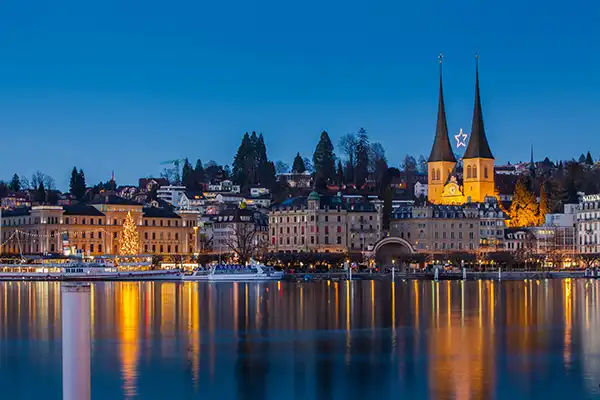Milan: A Symphony of History, Fashion, and Modern Innovation
Milan, Italy’s northern powerhouse, is a city where Gothic spires pierce the sky, Renaissance masterpieces whisper tales of genius, and cutting-edge design shapes tomorrow’s trends. Known as the global capital of fashion and a cradle of art and commerce, Milan seamlessly blends its storied past with a pulsating modern energy. From the awe-inspiring Duomo to the avant-garde installations of Design Week, here’s your journey through this multifaceted metropolis.
At Milan’s core stands the Duomo di Milano, a Gothic marvel adorned with 3,400 statues and 135 spires, its marble façade glowing like lace under the sun. Construction began in 1386 and spanned six centuries, a testament to Milan’s enduring ambition. Climb to its rooftop for panoramic views of the city, where the Alps glimmer on clear days. Nearby, the Galleria Vittorio Emanuele II, a 19th-century glass-domed arcade, dazzles with luxury boutiques and mosaic floors depicting Italy’s regions—step on the bull mosaic for good luck, a tradition among locals.
Art lovers flock to Santa Maria delle Grazie, home to Leonardo da Vinci’s The Last Supper. Painted in the late 15th century, this fading fresco remains one of humanity’s most profound artistic achievements, though viewing requires advance booking. For deeper immersion, the Sforza Castle houses Michelangelo’s final sculpture, Rondanini Pietà, alongside armor and tapestries from Milan’s ruling dynasties.
Fashion: The City’s Pulse
Milan’s reputation as the world’s fashion capital is undisputed. The Quadrilatero della Moda (Fashion Quadrilateral), anchored by Via Montenapoleone, brims with flagship stores from Prada, Gucci, and Armani. Even the city’s architecture reflects its style obsession—the futuristic Porta Nuova district, with its twisting skyscrapers, mirrors the creativity of Milanese designers.
For a taste of local flair, explore Brera, a bohemian neighborhood where independent ateliers and vintage shops thrive. Here, fashion isn’t just clothing—it’s a lifestyle. As one traveler noted, Milan’s streets are a runway, where even casual strolls demand effortless elegance.
Culinary Delights: Beyond Pizza and Pasta
Milanese cuisine marries tradition with innovation. Start your day with a maritozzo, a sweet cream-filled bun, paired with an espresso at a sidewalk café. At lunch, savor risotto alla Milanese, saffron-infused rice that glows golden, a dish born in the city’s monasteries.
Evenings call for aperitivo, a ritual where cocktails like Negronis come with lavish spreads of cured meats, cheeses, and bruschetta. Head to Navigli District, where canal-side bars buzz with laughter and clinking glasses. For a splurge, Ristorante Cracco reimagines classics like cotoletta alla Milanese (veal cutlet) with molecular flair, earning its Michelin stars.
Green Spaces and Day Escapes
Amid the urban bustle, Milan offers serene retreats. Parco Sempione, adjacent to Sforza Castle, is a lush oasis where locals jog, picnic, or nap under centuries-old trees. For a grander escape, Lake Como, an hour north, enchants with villas, gardens, and snow-capped Alps—a playground for George Clooney and discerning travelers alike.
Closer to the city, Giardini della Guastalla, a hidden 16th-century garden, offers tranquility with its pond, baroque fountain, and shaded benches—a perfect spot to reflect on Milan’s layered beauty.

Design Week: Where Creativity Ignites
Every April, Milan transforms into a global design laboratory during Milan Design Week. In 2025, the event showcased groundbreaking installations like The Library of Light at Brera Art Gallery, where illuminated textiles redefined spatial perception. At Milan University’s exhibition zone, interactive pieces invited visitors to rethink sustainability and technology—proof that Milan’s creative spirit is as vibrant as ever.
Cultural Immersion: Stories and Secrets
Milan’s soul lies in its contradictions. The Basilica di Sant’Ambrogio, a 4th-century church, stands humbly beside modern university buildings, symbolizing the city’s reverence for both past and progress. For a quirky slice of history, visit Cimitero Monumentale, a cemetery where ornate tombs honor Italy’s industrialists and artists—a “city of the dead” as elaborate as the living.
Engage with locals at Mercato di Via Fauche, a market where vendors hawk truffles, aged balsamic vinegar, and gossip. As one traveler discovered, even a haircut here becomes a philosophical exchange about beauty and identity.
Practical Magic: Tips for Travelers
- Timing: Spring (April–June) and autumn (September–November) offer mild weather and events like Design Week. Winter brings Christmas markets and fewer crowds.
- Transport: Milan’s metro is efficient, but walking reveals hidden courtyards and street art. For day trips, trains connect to Como (1 hour) and Verona (1.5 hours).
- Etiquette: Dress smartly—Milanese take pride in appearance. A casual “buongiorno” (good day) opens doors.
A City of Endless Layers
Milan is more than a destination—it’s an evolving narrative. It’s in the clatter of espresso cups at dawn, the hum of sewing machines in hidden ateliers, and the golden light bathing the Duomo at sunset. As Leonardo da Vinci once roamed these streets, today’s innovators—designers, chefs, artists—continue his legacy of curiosity and reinvention.
To visit Milan is to witness a city unafraid of contradictions: ancient yet avant-garde, opulent yet understated. As the Italians say, “Milano non è una città, è un’emozione”—Milan isn’t a city; it’s an emotion. Let it stir yours.
Arrivederci, Milano!